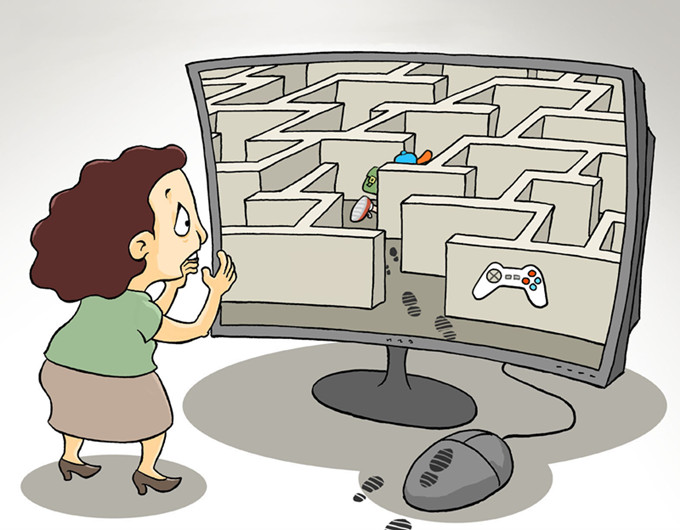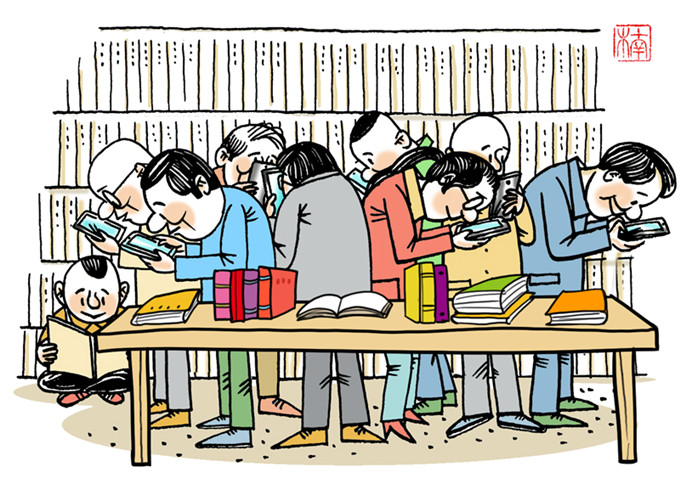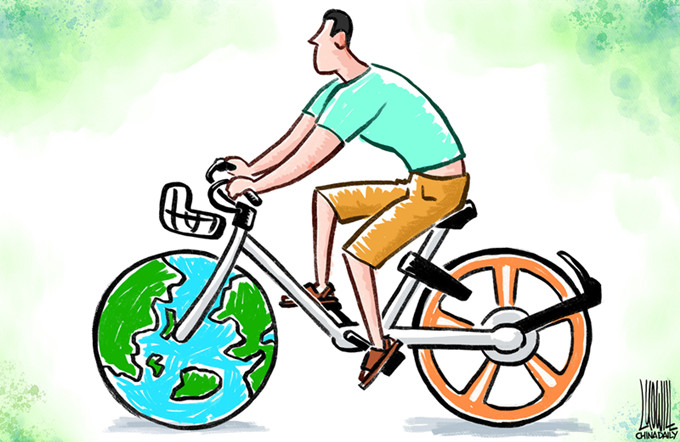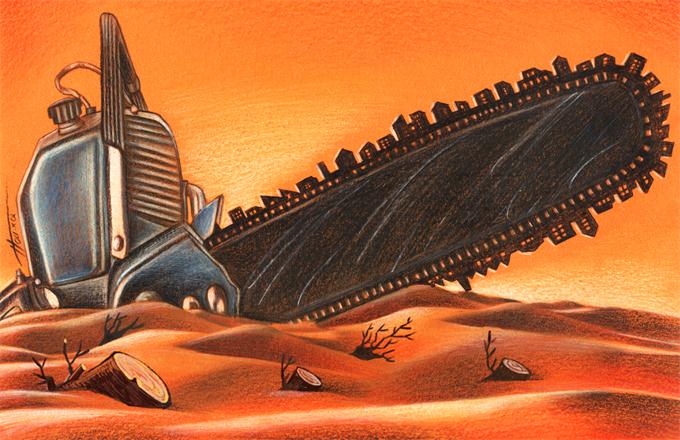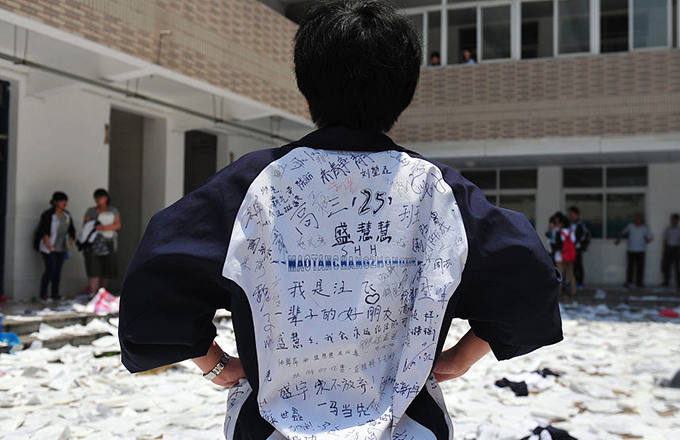Sharing the same roads, sharing the same destiny
There once existed a country –even though not many people know this because posterity very easily forgets its failures–which had the potential to be one of the richest and most prosperous nations the world has ever seen. It was incredibly rich in natural resources (among them the largest oil reserves in the world and also huge amounts of precious metals and minerals); it was located in the midst of the tropics, which meant wonderful, reliable and comfortable weather, perfect for growing all kinds of high-yielding crops and a soil so fertile that everything could grow with barely any effort being made. Its borders included large coastlines in both the Pacific and Atlantic oceans –a strategic location if there ever was one– and a territory with huge tracts of wetlands and rainforest filled with an amazing diversity of life; it also had reserves of water large enough to guarantee not only that water scarcity would never be an issue if these were properly managed, but also a huge potential for energy development. This was a paradise, a country blessed with all the possible advantages to succeed if only it played its cards properly.
This land of riches was a former Spanish colony known as the New Granada and it comprised the territories of what today are the countries of Colombia, Panama, Venezuela, Ecuador and western Guyana, as well as a portion of Northwestern Brazil. After the independence that came after almost 400 years of Spanish rule, suddenly the New Granada found itself bursting with possibilities and, at the time, the world saw not only New Granada but the whole of South America as holding great promise and expected a bright future for the region because it was a rich place that had inherited western ideals of governance and self-determination. But none of the promises eventually materialized and the great New Granada eventually fell apart, divided into smaller units that today still struggle to define themselves among poverty, mismanagement and inner conflicts. And the main reason for this collapse, even though there were other political and economic factors, can be simply summarized as a chronic lack of something very basic, something we often take for granted: roads.
Huge amounts of resources meant nothing without roads. Those vital connections between cities and points of gathering and recollection, between centers of power or wealth and the structures that allow that power and wealth to exist in the first place, were scarce and nobody paid attention to that problem. The Spanish rulers that occupied what was the Viceroy of New Granada before it became an independent country in the early 19th century hadn’t bothered to build more roads than those connecting the main locations where gold and silver were extracted and the ports –mainly that of the city of Cartagena– where it could be sent out to Spain. Everything else hardly counted and this was reflected in the fact that even the three capital cities of the former colonies –Bogota, Quito, and Caracas– were barely connected to each other through any more than elemental routes that required weeks of arduous travel to complete a single journey.
Even though they shared the same culture, these cities and other territories became suspicious of each other and the reason for this suspicion that led to internal wars and to the downfall of the unified Republic, was the perceived distance between them and the evident unreachability caused by the both physical and metaphorical lack of connections and routes of exchange between them. And if this happened between people who had joined their efforts to obtain their freedom from a common colonizer and even spoke the same language, what could be expected of countries that are distant from each other not only linguistically but also in terms of culture, religion and moral values? Today, many places as full of potential as the New Granada are affected by many issues that are the result of the same basic problem: the lack of contact, of interconnectedness, allowing large portions of the population to feel isolated, forgotten and disengaged from whatever is happening in their own country and in their neighboring territories.
The example of the New Granada, of an unfulfilled promise of greatness being thwarted by disconnection, should be remembered today as a cautionary tale for those who believe that globalization will spontaneously produce relationships even among the most different of cultures when the opposite is true: even in our interconnected world where everyone carries a GPS on their pocket, relationships between different countries and cultures have to be carefully and painfully constructed –often from scratch– and, more importantly, their emergence and development has to be facilitated through several different catalysts of which infrastructure –actual, physical roads– is only the most salient one among many which are even more important: building trust, making everyone feel equally important within different economic and political relationships, listening to the needs and demands of different cultural groups and catering to the economic conditions of local communities, regardless of their size. In a relationship of this kind, differences should never mean conflict but rather an opportunity for developing new strategies and increasing one’s knowledge and awareness of how diverse the world remains even though globalism has always been seen as a force that will regrettably homogenize cultures and ways of living. And nobody should ever be regarded as “too small” or “too weak”: people often say that there isn’t such a thing as a small enemy, and the same applies to allies.
This is where the Belt and Road initiative, propelled by several Chinese economic policies, and which has been hailed as the construction of a new Silk Road, can prove its worth as a strategy to integrate economies that have been affected by neglect or perhaps the lack of imagination of those who think of themselves as too powerful. The idea of this being a reboot of the ancient Silk Road is appropriate if we remember that there was never an actual, unified road where goods were traded from East to West and back, but rather a network of pathways and trade routes that were painstakingly constructed through centuries of relationships and an unquenchable thirst for both exotic goods and knowledge. For those who lived during its heyday, the commercial routes we know as the Silk Road were never physical roads: there was merely an idea of it, the Road was far more than a series of lines traced on maps and charts. It represented an awareness of their interconnection with other cultures, it meant the comforting knowledge that they were not isolated and that they counted and were part of something bigger than themselves. The Road was also not only a place to exchange goods but also ideas that fostered innovation and brought prosperity to many.
And the majority of these networks weren’t even inside China itself and this is why it can be a very appropriate symbol for the new initiative: because by promoting trade as well as strategic partnerships and enabling new ways for cooperation and economic diversity, it is saying that it isn’t only China itself that counts but its neighbors, mainly in Central Asia and the places that have always been located at the borders between East and West, these places that have been often seen, just like the New Granada once was, as full of riches and potential, willing to open their doors to the world but without having the resources to do it on their own. The Belt and Road initiative is a clear invitation for participation that states loudly and clearly that regardless of who happens to be the trailblazer in charge of opening the path, the idea is that everyone should have access to it and share it equally. Those who share the same roads will be always connected and their futures will depend more and more on how they treat each other and learn that connections mean everything.






